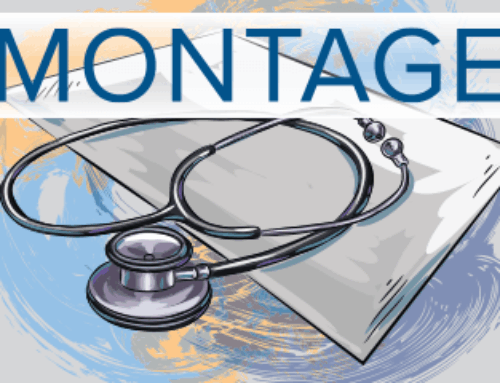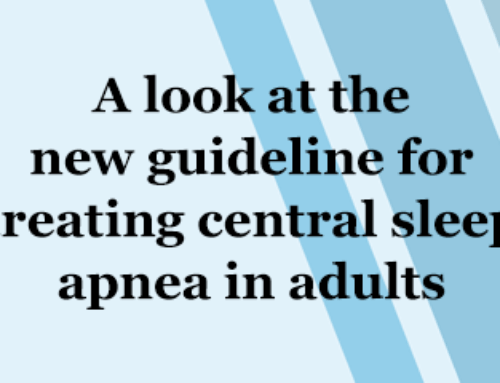By Kate Robards, Senior Writer
While football players tackle intense physical demands on the field, many also wrestle with sleep disorders that quietly undermine their health and performance.
Aaron Taylor, a former NFL offensive guard, knows this firsthand. An All-American and Super Bowl champion with the Green Bay Packers, Taylor enjoyed a successful six-season NFL career. But behind his achievements on the field, he struggled with obstructive sleep apnea (OSA).
Like many linemen, Taylor carried extra weight throughout his career, a factor that put him at risk for OSA. He snored loudly and often felt fatigued, but it wasn’t until two friends, including his former teammate Reggie White, died from heart complications linked to untreated OSA that Taylor sought medical help.
Following a sleep study, he was diagnosed with OSA and began CPAP therapy, which improved his quality of life. Today, Taylor is an advocate for sleep health, and he has partnered with the AASM to raise awareness about the warning signs of OSA.
“Even at a young age, ignoring the symptoms of sleep apnea leads to dangerous consequences — as I’ve seen firsthand for fellow players and friends who have struggled with this condition,” Taylor said.
While Taylor speaks out about OSA, another NFL lineman, Josh Andrews, has taken on a different battle. Andrews, an offensive guard, was diagnosed with narcolepsy. He began noticing symptoms as a teenager, battling excessive daytime sleepiness, but he brushed it off, assuming his fatigue was just part of life as a high-level athlete. It wasn’t until he was 26 and playing for the Philadelphia Eagles that Andrews received a diagnosis.
In 2021, Andrews shared his story as part of Project Sleep’s World Narcolepsy Day campaign, revealing the daily struggles he faced.
Both Taylor and Andrews are part of a growing number of NFL players speaking publicly about their experiences with sleep disorders. Ryan Jensen, former center on the Baltimore Ravens and Tampa Bay Buccaneers, credits his sleep apnea diagnosis with saving his career. Players like Tony Dorsett, Roy Green, and Percy Harvin have also been vocal about their struggles with OSA, bringing attention to the issue within the broader football community.
Additionally, recognizing the role OSA played in Reggie White’s death, his widow Sara White formed a foundation in his name to raise awareness and educate about the sleep disorder. The nonprofit organization also provides affordable CPAP equipment to those in need.
Larger athletes, bigger risks: OSA in football players
Sleep disorders are prevalent in the NFL, particularly among larger athletes like offensive and defensive linemen. Research indicates that NFL players, especially linemen, face an elevated risk of OSA due to their size and body composition. Now, the average weight of linemen exceeds 300 pounds — a number that’s ballooned over the years.
A study conducted by Mayo Clinic investigators highlighted that linemen had an average of 18.1 episodes of sleep-disordered breathing (SDB) per hour. Further studies have underscored a high prevalence of hypertension and OSA among these athletes. For instance, a 2010 study revealed SDB in 52.3% of former NFL players. When stratified by position, linemen were more likely to have SDB (61.3% vs. 46.6%), obesity (83.5% vs. 52.5%), and hypertension (44.1% vs. 34.0%) compared with other players.
Additionally, a 2017 scoping review reported that nearly 50% of retired NFL linemen who were studied displayed symptoms of OSA, and most active players showed symptoms associated with a SDB condition.
The NFL’s focus on sleep
The integration of sleep into NFL culture is becoming increasingly visible. Los Angeles Rams coach Sean McVay, for example, has shifted away from a “work till you drop” mentality and now prioritizes rest and recovery for his players.
The New England Patriots employ sensory deprivation tanks for purported benefits akin to a four-hour nap, and former quarterback Tom Brady famously adopted a strict sleep routine to ensure he performed at his best. Even Kansas City Chiefs tight end Travis Kelce has publicly spoken about how much he loves “cat naps.”
Sleep technology is also becoming a staple in the NFL. Some teams have partnered with companies to track players’ sleep patterns, using wearable devices that monitor sleep quality and recovery. The Seattle Seahawks, for example, wore the Fatigue Science Readiband to monitor fatigue throughout the season.
However, the push to monitor sleep hasn’t come without controversy. In 2015, the NFL Players Association (NFLPA) filed a grievance against the NFL, arguing that monitoring players’ sleep data outside of games and practices violated the collective bargaining agreement. The NFLPA expressed concerns over privacy and how the data could potentially be used against players during contract negotiations. Although the grievance was settled, teams now work closely with the NFLPA to ensure that players are informed and consent to any sleep tracking.
Partnerships for peak performance
The NFL’s focus on sleep has drawn support from members of the sleep medicine community.
A study co-authored by Patrick Strollo, Jr., MD, FAASM, a former president of the AASM and member of the NFL’s medical committee, highlighted the prevalence of cardiovascular risk factors among NFL players. Dr. Strollo’s research has contributed to a growing understanding of how OSA and other sleep-related issues can affect the long-term health of football players.
Charles Czeisler, MD, PhD, FAASM, a leading expert in sleep medicine at Harvard Medical School and Brigham and Women’s Hospital, has advised NFL teams such as the Cleveland Browns and New England Patriots on managing players’ sleep schedules during travel. His work has underscored the importance of mitigating jet lag and optimizing recovery for players, particularly when teams travel across time zones for games.
James Maas, PhD, a former Cornell University psychology professor who coined the term “power nap,” has also contributed to the conversation, advising teams like the New York Jets and Miami Dolphins on the benefits of napping to enhance performance. Meeta Singh, MD, a physician and psychiatrist who has worked with NFL, MLB, NHL and NBA teams, emphasizes the importance of individualized sleep strategies to optimize athlete recovery.
Mark Aloia, PhD, head of sleep and behavioral science at Sleep Number and an associate professor of medicine at National Jewish Health in Denver, also meets with some of the NFL’s athletes and coaches to offer sleep tips. Sleep Number, a corporate sponsor of the NFL, has provided high-tech mattresses to over 80% of players. In 2018, Sleep Number and the NFLPA announced a partnership to use the technology’s aggregate player data and insights to “holistically advance player well-being.”
These partnerships between NFL teams and sleep experts are part of a broader effort to address sleep disorders across the league. The NFL Player Care Foundation, in collaboration with Tulane University School of Medicine, now includes OSA screenings as part of its comprehensive health screenings for former players.
A new era of player care
The NFL’s growing awareness of sleep’s impact on performance and health marks a significant shift in how the league approaches player care. By highlighting players’ personal stories, the stigma around sleep disorders is starting to fade. As the league integrates sleep science into its player wellness programs and with continued support from sleep experts, NFL players are now better equipped to manage the sleep challenges they face.





